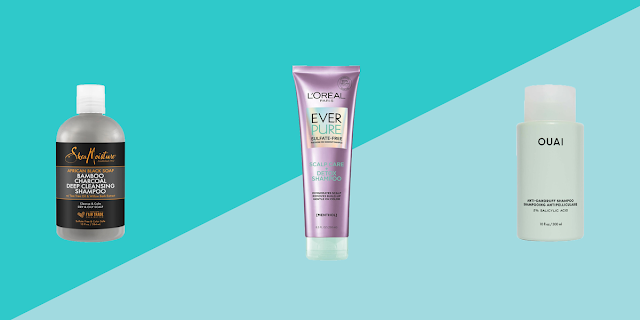
Salicylic Acid or Niacinamide for Blackheads?
If this isn’t your first time at the rodeo and you know a thing or two about skin care, you might be wondering how you can fight blackheads with two skin care ingredients that work so differently. Well, that’s what we’re focusing on today. So if you’re wondering whether to use salicylic acid or niacinamide for blackheads, stay tuned to learn more.
What is Niacinamide?
Niacinamide is a form of vitamin B3 that is found in many foods rich in the vitamin, such as kale, greens, and almonds. With its impressive multitasking benefits, it plays an important role in keeping your skin healthy. Some of the benefits of Niacinamide for the skin include its ability to moisturize, protect the skin from external aggressors, and lock moisture into the underlying layers of the skin. You’ll notice a significant reduction in signs of aging, such as fine lines and wrinkles, and a noticeable improvement in the tone and texture of your skin. The final benefit of Niacinamide is that it regulates the skin’s sebum production, helping oily and acne-prone skin stay balanced, hydrated, and healthy.
What is Salicylic Acid?
Salicylic acid is one of the most commonly used beta hydroxy acids (BHAs) and is known for its effectiveness against acne-prone skin as well as other blemishes and breakouts. As a chemical peel, it removes dead skin cells and debris that build up on the surface of the face. The unique benefit of salicylic acid is its oleophilicity, meaning it is oil-soluble. h. It can penetrate oils and reach deep into the pores to remove bacteria, dirt, and excess sebum.
Compared to niacinamide, salicylic acid is less versatile but helps exfoliate and reach areas of the skin that are not affected by other chemical peels, such as the popular alpha hydroxy acids, glycolic acid, and lactic acid. This BHA is so effective that it requires you to incorporate it properly into your daily routine. This is recommended to avoid unwanted side effects, such as severe dryness, irritation, and redness. People with dry and sensitive skin should consult a doctor or dermatologist before using salicylic acid on their face. People with oily skin should not overuse products rich in this acid as it can cause dryness and strip the outer layer of oil from the skin.
Does Niacinamide Help With Blackheads?
Yes, niacinamide helps fight blackheads, but it does not eliminate them on its own. This can be achieved by preventing the formation of blackheads as it reduces inflammation, regulates sebum production and minimizes the appearance of pores. All of these ensure that the skin barrier remains fully functional with the right amount of water and oil. This is very important for skin health and the overall appearance of your complexion as it reduces any signs of damage and prevents further damage.
Which is better, Salicylic Acid or Niacinamide?
This is one of the most difficult questions when it comes to these two powerful ingredients. The truth is, neither is better than the other as they both have unique benefits for the skin. Salicylic acid is very effective at clarifying the complexion, freeing it from the dead skin cell barrier that prevents the active ingredients of other skincare formulas from penetrating the skin. The difference with Niacinamide is that it increases facial hydration while reducing imbalances in the protective barrier on the outer surface.
Does Niacinamide help with blackhead removal?
As I mentioned before, Niacinamide has anti-inflammatory properties, which basically means that it targets any inflamed areas and prevents acne from developing into active spots and breakouts. While niacinamide can’t remove blackheads that have already formed on your skin, it can reduce their frequency, resulting in fewer spots and blackheads over time.
Can niacinamide and salicylic acid be used together?
Absolutely! Together, these two ingredients create an impressive skin combo, especially for those with oily and acne-prone skin. We’ve found that people with oily skin often tend to overuse products containing salicylic acid in the hope of clearing their skin. The problem is that after cleansing, moisturizing is important. Niacinamide can intervene here and lock in moisture for the skin. The combination of these active ingredients will provide your complexion with the benefits of salicylic acid, which can clear out all the accumulated impurities while fighting signs of dryness with the help of niacinamide and its moisturizing effects.
Can salicylic acid remove blackheads?
In fact, 100% blackhead removal is one of the main benefits that salicylic acid can provide to your skin. The chemical exfoliating properties of BHA remove impurities, bacteria, and surface debris before they can accumulate and form blackheads and other blemishes. You can remove existing blackheads with salicylic acid-rich skin care products, such as exfoliating tonics or serums.
With regular use, your complexion will become clearer, but be careful: don’t use salicylic acid too often, especially if you’re not familiar with the ingredient, as it can cause dryness, discomfort, and redness. If you have concerns, I recommend consulting a doctor, dermatologist, or trained professional to find the best product for you and your skin.
Can Niacinamide Remove Acne Scars?
Niacinamide is an important nutrient for the skin that offers a variety of benefits, from increasing skin hydration to reducing the appearance of acne scars. Nothing is more frustrating than suffering from blemishes only to find that acne scars are still there. If left untreated, these scars can remain on the skin for a long time. By incorporating Niacinamide into your daily routine, you can minimize the visibility of these dark spots and hyperpigmentation. Your skin feels balanced, moisturized, and at its healthiest.
Don’t forget to contact us at any time if you have any questions, and follow us on Instagram.


